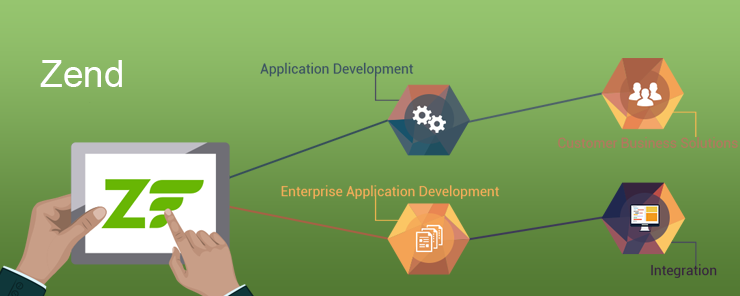 In our last tutorial of Zend Framework we studied the use of Calendar class in Zend Framework, today we will learn about Models in Zend Framework in this tutorial.
In our last tutorial of Zend Framework we studied the use of Calendar class in Zend Framework, today we will learn about Models in Zend Framework in this tutorial.
- A model is a conceptual representation of the entities involved in an application and would be analogous to the class or object in an object oriented world.
- In some places, model contains only the structure of the entity.
- And in some places, it also contains the business logic associated with the object.
- Using models we can interact with the database to insert, retrieve, update and delete records.
- We will take an example of getting registration information from the user through a form and then working operations like inserting, retrieving, updating etc. on it.
- Here I will not give the form code; we will directly see the database interactions.
If your form file name is registration.php, you can browse it with the following address:
http://localhost/user/registration
<?php
require_once 'Zend/Db.php';
Zend_Loader::loadClass('Zend_Controller_Action');
Zend_Loader::loadClass('Zend_View');
class RegisterController extends Zend_Controller_Action
{
function registerAction()
{
$view = new Zend_View();
$view->setScriptPath('../application/views/');
echo $view->render('registeration.php');
}
function insertAction()
{
$param = array(
'host' => 'localhost',
'username' => 'abcd',
'password' => 'abcd',
'dbname' => 'Register'
);
$DB = Zend_Db::factory('PdoMysql', $param);
$data = array(
'Fnm' => $_POST['Fnm'],
'Lnm' => $_POST['Lnm'],
'email' => $_POST['email'],
'unm' => $_POST['user'],
'pwd' => new Zend_Db_Expr($db->quoteInto('MD5(?)',$_POST['pass'])),
);
$DB->insert('users',$data);
}
?>
$DB->insert('users',$data);
class RegisterController extends Zend_Controller_Action
{
function retrieveAction()
{
$view = new Zend_View();
$view->setScriptPath('../application/views/');
echo $view->render('info.php');
}
function getinfoAction()
{
$param = array(
'host' => 'localhost',
'username' => 'abcd',
'password' => 'abcd',
'dbname' => 'Register'
);
$DB = Zend_Db::factory('PdoMysql', $param);
$sel = $DB->select();
$sel = $DB->select();
$sel->from('users', '*');
$sel->where('unm = ?', $_POST['unm']);
$sel->where('pwd = ?', $_POST['pwd']);
$sql = $sel->__toString();
//echo $sql;
$rowsFound = $DB->fetchAll($sel);
if (isset($rowsFound[0]["unm"]))
{
$this->_redirect('/');
}
else
{
echo "Login information incorrect. Please
try again.";
}
}
}
$sql = $sel->__toString(); //echo $sql;
$rowsFound = $DB->fetchAll($sel);
if (isset($rowsFound[0]["unm"]))
{
$this->_redirect('/');
}
else
{
echo "Login information incorrect. Please
try again.";
}
Thus we studied to work with databases in Zend Framework in this Models in Zend Framework tutorial.


